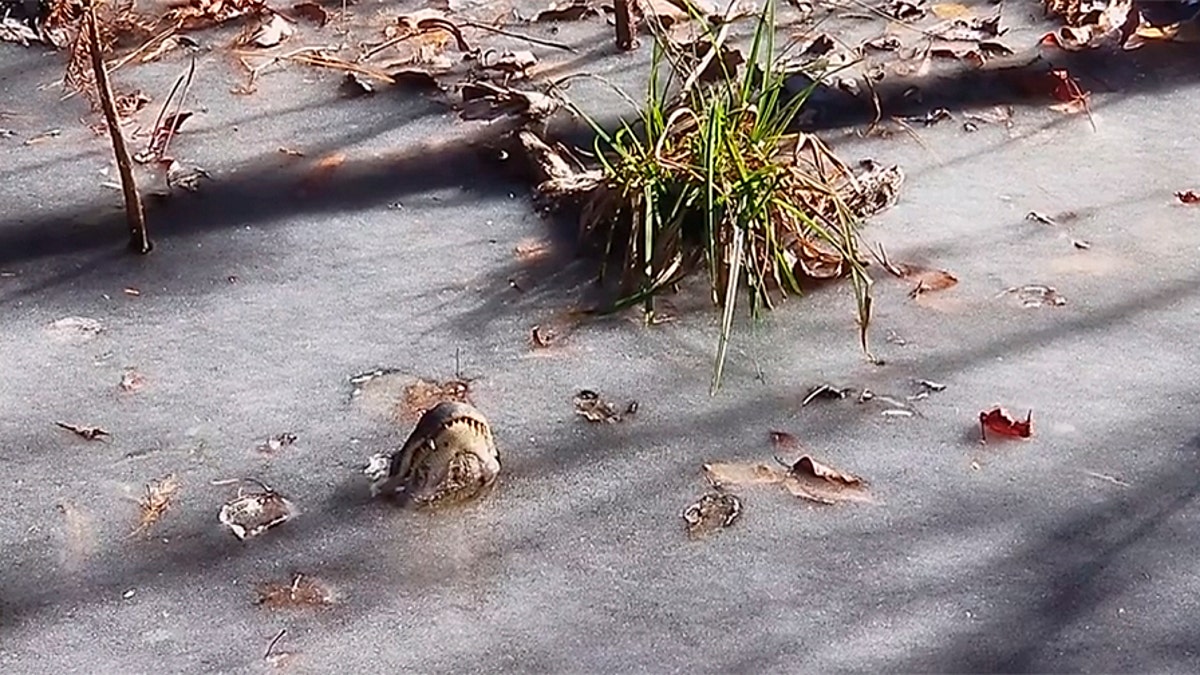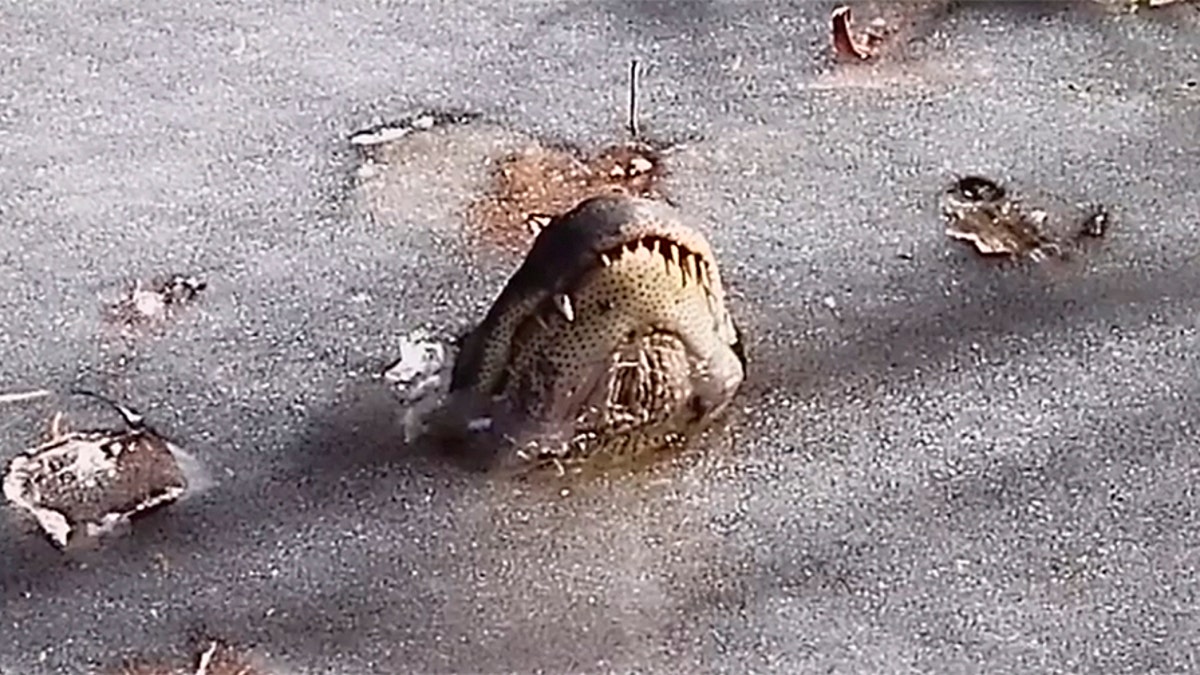
(Credit: Shallotte River Swamp Park, Facebook)
How does an alligator deal with a cold snap?
The answer, thanks to a video from an American wildlife park, has gone viral.
And, like surviving many things in life, it’s all about keeping your head above water. Or your snout, to be exact. Even if it looks as creepy as heck.
The Shallotte River Swamp Park in North Carolina in the U.S. lifted the lid on the ancient survival trick when it posted an eerie-looking video of its rescue alligators in ice after last week’s perilous snow storms.
The only part of their bodies protruding from their frozen-over home is their snout, with maybe a few teeth visible. Basically, when the cold truly kicks in, so does prehistoric instinct.

(Credit: Shallotte River Swamp Park, Facebook)
They get their snouts above the surface and basically let themselves get frozen into place. The result — creepy-looking alligator noses — and alligator’ teeth — embedded in ice.
The North Carolina Swamp Park’s “alligators on ice” video received 45,000 views in its first 21 hours on Facebook.
They’ve since updated with a new video as the melt begins, as well as explaining why the seemingly snap-frozen reptiles can do what they do.
After the water freezes their snouts, and them, in place, the alligators enter “a state of brumation, like hibernating,” according to the park.
They can regulate their body temperature in all sorts of weather, and basically stay frozen in place until the ice melts.
Park officials said if you step on a frozen alligator, it’s unlikely the reptile will react.
“They are trying to conserve energy to maintain body temperature, the park said in a Facebook post.
We reckon that may be a croc (see what we did there?).

(Credit: Shallotte River Swamp Park, Facebook)
Sure, they mightn’t attack frozen, but how do you know when an alligator’s defrosted?
And what happens if his teeth start chattering?
Last week, a massive winter storm pummelled a huge swath of the U.S., from the New York to the Carolinas, killing at least 17 people as massive snowfall, ice and high winds cause havoc in the region.
Though not all animals are so lucky. Sharks and iguanas have been found frozen solid in the wake of the “bomb cyclone”, which has pummelled the US east coast.

(Credit: Shallotte River Swamp Park, Facebook)
The Atlantic White Shark Conservancy said it discovered three dead thresher sharksstranded on a beach in Massachusetts in the past three days, as a result of the record-breaking cold snap.
It is believed that the first two died due to “cold shock” but the third was found completely frozen, with the group dubbing it a “true sharkcicle”.
Iguanas were also seen stiffening and falling out of trees in parts of South Florida.
The storm, categorised by meteorologists as a “Bomb Cyclone”, rapidly intensified off the East Coast, undergoing what in meteorology is called “bombogenesis”, or an extremely sharp drop in atmospheric pressure.
This story originally appeared in news.com.au.




















